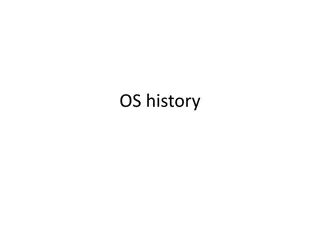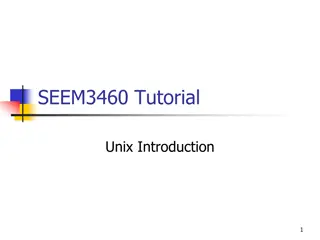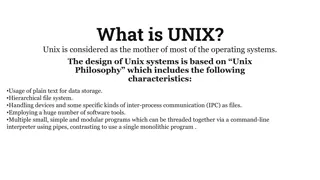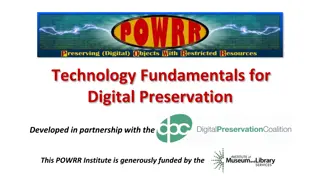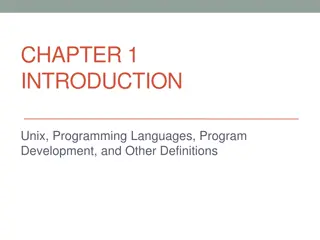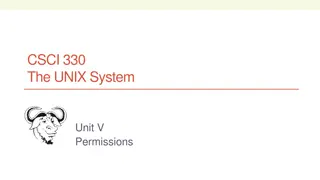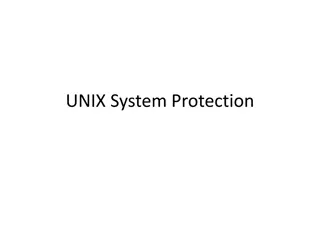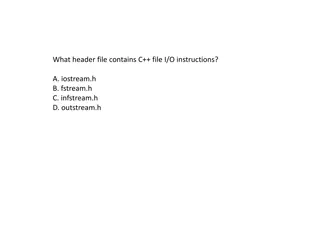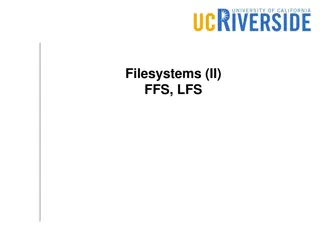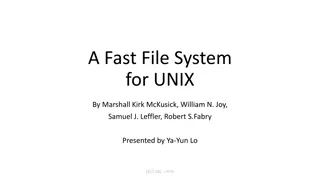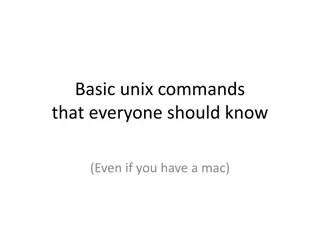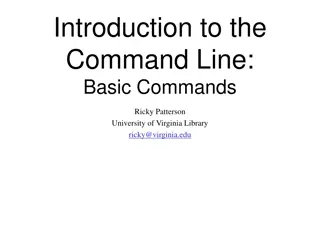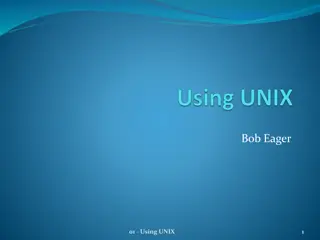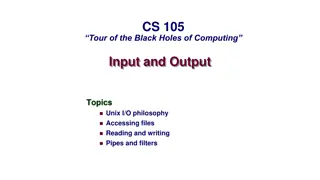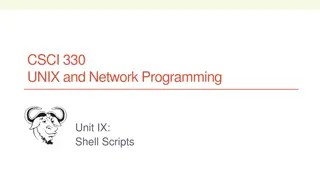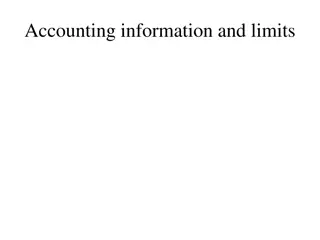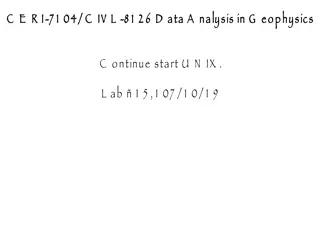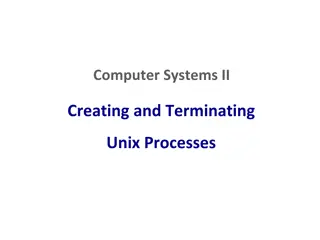Understanding UNIX Operating System and File System
UNIX is a powerful operating system developed in the 1960s that forms the basis for modern systems like Linux. It manages hardware communication for users and programs. The file system organizes files in a hierarchical structure, with directories acting as folders. Learn about directories, subdirectories, files, and paths within the UNIX environment.
Download Presentation

Please find below an Image/Link to download the presentation.
The content on the website is provided AS IS for your information and personal use only. It may not be sold, licensed, or shared on other websites without obtaining consent from the author. Download presentation by click this link. If you encounter any issues during the download, it is possible that the publisher has removed the file from their server.
E N D
Presentation Transcript
UNIX - What is it? UNIX is an operating system First developed in the 1960s, constant development ever since Operating system is a suite of programs that make computer work Communicates with hardware on behalf of users and programs Department machines use Linux, a version of UNIX
File System All files are organized in a directory structure - the file-system Directories are like folders - they contain many files Arranged in a hierarchical structure, like an inverted tree The top of the hierarchy is the root (written as a slash /) .. refers to the directory above another directory (aka the parent directory) Only the root has no parent A directory inside another directory is called a subdirectory
Example TempHome cats dogs dog.txt myCats catsInfo.csv myDogs dogsInfo.csv yellowCats.jpg brownCats.jpg chihuahua.txt otherDogs.jpg myDog.jpg
Home Directory TempHome cats dogs dog.txt myCats catsInfo.csv myDogs dogsInfo.csv yellowCats.jpg brownCats.jpg chihuahua.txt otherDogs.jpg myDog.jpg
Sub Directories TempHome cats dogs dog.txt myCats catsInfo.csv myDogs dogsInfo.csv yellowCats.jpg brownCats.jpg chihuahua.txt otherDogs.jpg myDog.jpg
File TempHome cats dogs dog.txt myCats catsInfo.csv myDogs dogsInfo.csv yellowCats.jpg brownCats.jpg chihuahua.txt otherDogs.jpg myDog.jpg
Parent Directory TempHome cats dogs dog.txt myCats catsInfo.csv myDogs dogsInfo.csv yellowCats.jpg brownCats.jpg chihuahua.txt otherDogs.jpg myDog.jpg
Paths TempHome cats dogs dog.txt myCats catsInfo.csv myDogs dogsInfo.csv yellowCats.jpg brownCats.jpg chihuahua.txt otherDogs.jpg myDog.jpg
Paths /TempHome/dogs/myDogs TempHome cats dogs dog.txt myCats catsInfo.csv myDogs dogsInfo.csv yellowCats.jpg brownCats.jpg chihuahua.txt otherDogs.jpg myDog.jpg
Paths TempHome cats dogs dog.txt myCats catsInfo.csv myDogs dogsInfo.csv yellowCats.jpg brownCats.jpg chihuahua.txt otherDogs.jpg myDog.jpg
Paths /TempHome/cats/myCats/yellowCats.jpg TempHome cats dogs dog.txt myCats catsInfo.csv myDogs dogsInfo.csv yellowCats.jpg brownCats.jpg chihuahua.txt otherDogs.jpg myDog.jpg
Terminal Program on UNIX machines which allows user to navigate the filesystem Can execute various commands to find, read, write, or execute files pwd - prints the working directory ls - lists contents of current directory cd - change directory mkdir - makes a new directory touch - creates a file (includes extension)
Example /TempHome/dogs TempHome pwd cats dogs dog.txt myCats catsInfo.csv myDogs dogsInfo.csv yellowCats.jpg brownCats.jpg chihuahua.txt otherDogs.jpg myDog.jpg
Example TempHome ls myDogs dogsInfo.csv cats dogs dog.txt myCats catsInfo.csv myDogs dogsInfo.csv yellowCats.jpg brownCats.jpg chihuahua.txt otherDogs.jpg myDog.jpg
Example TempHome cd cats/myCats cats dogs dog.txt myCats catsInfo.csv myDogs dogsInfo.csv yellowCats.jpg brownCats.jpg chihuahua.txt otherDogs.jpg myDog.jpg
Example TempHome cats dogs dog.txt cd ../../dogs myCats catsInfo.csv myDogs dogsInfo.csv yellowCats.jpg brownCats.jpg chihuahua.txt otherDogs.jpg myDog.jpg
Review pwd - current directory ls - list contents cd - change directory
Review mkdir - make directory touch - create a file (include extension)


